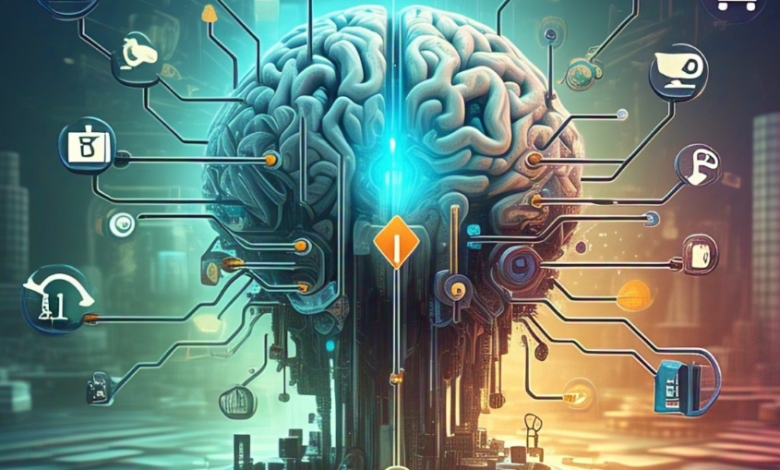The Compass Within: Understanding the Utility Function Behind Intelligent Agents

In the world of intelligent systems, every agent needs a compass—a hidden mechanism that decides which direction to take and which action to ignore. This compass is not made of metal and magnet, but of mathematics and intent. It is called the utility function, and it serves as the invisible heartbeat behind an agent’s reasoning, helping it quantify what “good” means. Much like a sailor adjusting sails according to the wind, an agent constantly aligns itself to maximize this internal notion of satisfaction.
The Silent Motivator: What Drives an Intelligent Agent
Imagine standing in a marketplace filled with countless choices: vibrant fruits, tempting snacks, glimmering souvenirs. Each option holds value, but your mind quickly runs a quiet calculation—cost, taste, health, and satisfaction. Without realizing it, you assign a score to each possibility and move toward the one with the highest reward. The same principle applies to intelligent agents.
The utility function acts as the agent’s internal evaluator. It converts complex states of the world into measurable preferences. Every possible action has consequences, and the utility function estimates their desirability. Instead of feeling emotions, the agent computes them—assigning numbers to happiness, success, or stability. Students pursuing an agentic AI course often begin by studying how these numerical preferences form the foundation of decision-making, revealing that intelligence is less about thought and more about structured evaluation.
From Instinct to Intention: How Utility Guides Action
The beauty of the utility function lies in its translation of instinct into intention. Think of a chess-playing AI. It does not “want” to win the game as humans do. Rather, it is designed to assign high utility to winning positions and low utility to losing ones. Every move is a hypothesis about improving its internal score.
In dynamic environments—such as robotics or autonomous driving—this becomes an ongoing negotiation between risk and reward. The utility function constantly balances short-term benefits (speed, progress) with long-term goals (safety, efficiency). It is the quiet conscience that prevents reckless behaviour in pursuit of a higher purpose.
By framing objectives in mathematical terms, agents gain the power to simulate countless futures and select the one that promises the highest value. The agent’s reasoning is not random—it is guided by the pursuit of maximum expected utility, the most elegant translation of “acting wisely.”
The Anatomy of Desire: Components of a Utility Function
Every utility function has three essential ingredients: goals, constraints, and trade-offs. Goals define what the agent seeks—like reaching a destination or minimizing error. Constraints introduce reality into the equation—limited resources, incomplete data, or ethical restrictions. Trade-offs make the system human-like, forcing it to weigh conflicting outcomes.
Consider a self-driving car approaching an intersection. The utility function evaluates options—accelerate, brake, or turn—while considering time, energy consumption, passenger comfort, and safety. The car must make a decision not by intuition but by computation.
Students of the agentic AI course quickly discover that designing this balance is where intelligence becomes art. A poorly designed utility function may lead to unwanted behaviours: a model that prioritizes speed may ignore safety, or one obsessed with accuracy may overlook time constraints. In this sense, the utility function is the moral core of any intelligent system—it defines not just what an agent can do, but what it should do.
The Mirror of Human Rationality
At a philosophical level, utility functions are more than algorithms—they are reflections of human reasoning itself. When we plan our careers, save money, or choose meals, we perform informal utility maximization. We mentally predict outcomes, assess probabilities, and gravitate toward what feels optimal.
In behavioural economics, this is formalized through expected utility theory. Yet humans often deviate from pure rationality, swayed by emotion, habit, or bias. Modern AI researchers study these deviations to build systems that better mirror real-world decision-making. The goal is not to create perfect rational agents, but adaptive ones—those that adjust their utility functions based on context, feedback, and ethics.
By learning how agents define “value,” we come to understand how intelligence itself evolves—from static programming to fluid, experience-driven reasoning.
See also: Wrist-Worn Health Revolution Via Smart Sensor Tech
When Utility Becomes Ethics
As AI systems take on decisions that affect humans—hiring recommendations, credit scoring, or autonomous vehicles—the design of their utility functions becomes an ethical question. What does “benefit” mean? For whom should it be maximized?
An AI that optimizes profit may harm fairness; one that maximizes engagement might encourage addiction. The future of ethical AI design depends on rethinking utility as a shared value function, one that aligns machine objectives with collective well-being. Researchers now explore “multi-agent utility frameworks,” where several agents negotiate and adjust their utilities to maintain balance in a system of diverse goals.
Utility functions thus evolve from personal gain calculators to moral compasses—shaping a new form of collective intelligence.
Conclusion: The Pulse of Purpose
The utility function is not merely a mathematical concept; it is the agent’s pulse of purpose, the formula that breathes intention into algorithms. It transforms scattered data into deliberate direction, allowing systems to choose not just what is possible, but what is preferable.
In essence, every intelligent agent—whether a chatbot, robot, or decision engine—lives by this principle of maximized value. The true challenge lies not in building smarter algorithms but in designing wiser utilities. Because in the pursuit of intelligence, it is the definition of utility that determines the definition of good.
Through understanding this invisible compass, one begins to see intelligence not as a spark of thought, but as a harmony between numbers and values—a balance between what the agent can achieve and what it should aspire to.



